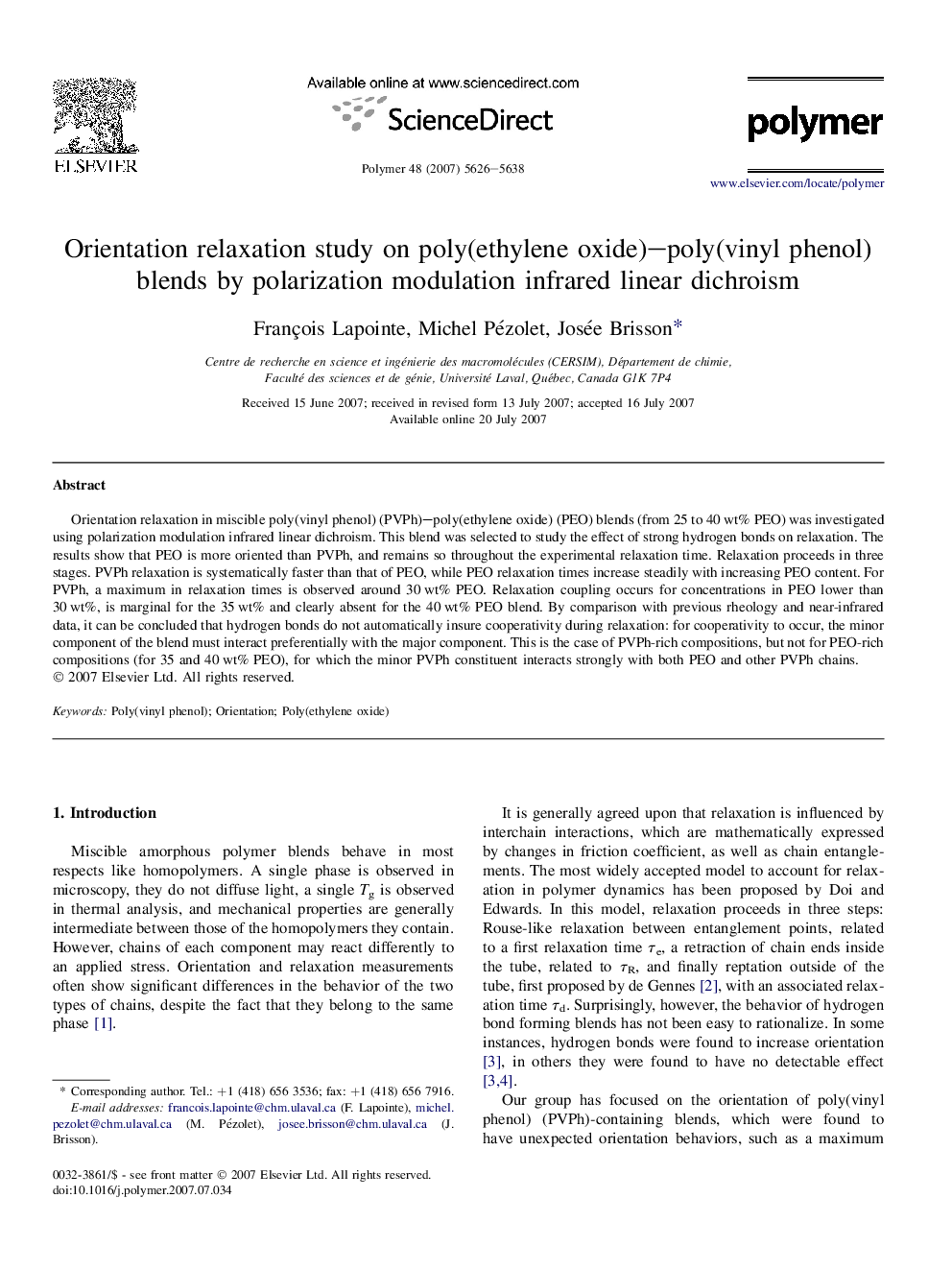| Article ID | Journal | Published Year | Pages | File Type |
|---|---|---|---|---|
| 5189708 | Polymer | 2007 | 13 Pages |
Abstract
Orientation relaxation in miscible poly(vinyl phenol) (PVPh)-poly(ethylene oxide) (PEO) blends (from 25 to 40Â wt% PEO) was investigated using polarization modulation infrared linear dichroism. This blend was selected to study the effect of strong hydrogen bonds on relaxation. The results show that PEO is more oriented than PVPh, and remains so throughout the experimental relaxation time. Relaxation proceeds in three stages. PVPh relaxation is systematically faster than that of PEO, while PEO relaxation times increase steadily with increasing PEO content. For PVPh, a maximum in relaxation times is observed around 30Â wt% PEO. Relaxation coupling occurs for concentrations in PEO lower than 30Â wt%, is marginal for the 35Â wt% and clearly absent for the 40Â wt% PEO blend. By comparison with previous rheology and near-infrared data, it can be concluded that hydrogen bonds do not automatically insure cooperativity during relaxation: for cooperativity to occur, the minor component of the blend must interact preferentially with the major component. This is the case of PVPh-rich compositions, but not for PEO-rich compositions (for 35 and 40Â wt% PEO), for which the minor PVPh constituent interacts strongly with both PEO and other PVPh chains.
Related Topics
Physical Sciences and Engineering
Chemistry
Organic Chemistry
Authors
François Lapointe, Michel Pézolet, Josée Brisson,
